Routines, Relationships and Resources: Keys to a Smooth Transition Back to School
- Details
- Written by Wendy MacMillan
- Category: The Goods
 It’s that time of year again! The days are cooler, the nights are longer and the air is filled with the excitement of a new school year. Whether the first week of school has your kiddos jumping for joy or wringing their hands, we have some suggestions to help the transition back to school go as smoothly as possible.
It’s that time of year again! The days are cooler, the nights are longer and the air is filled with the excitement of a new school year. Whether the first week of school has your kiddos jumping for joy or wringing their hands, we have some suggestions to help the transition back to school go as smoothly as possible.
First, Scarsdale High School Psychologist Dr. Peter Faustino's advice is to “Definitely fall into three R's (not reading, writing and arithmetic) but Routines, Relationships and Resources.”
Faustino suggests, “Start school routines now! The benefits of exercise and good sleep are showing profound effects on mental health. High School can be rigorous as student's juggle various demands, but prioritizing exercise and sleep are the foundation to managing it all. Examples would be to set an alarm now for the start time of school and practice getting into bed at the time you should when school is in session, eat meals as if you have started a school schedule, plan walks or regular physical activity, and perhaps even begin reading a new book to soften the transition of September.”
He also explains, “Relationships are key in the science of resilience as well as in academic success. Remind anxious teens that everyone is feeling a little nervous AND everyone is also looking forward to connecting. So freshmen should take chances to say hello to new classmates or be brave and ask to sit at someone's table at lunch. Juniors and seniors should reach out to teachers and connect in the first few weeks to ask questions and build trust. This also means avoiding social media and focusing time and energy on "in-person" connections that sound like laughing in the hallways, making plans to socialize on weekends, or spending time with teachers during office hours or afterschool.”
Finally, Dr. Faustino would “Encourage children to reflect on their Resources (both internal and external). Internal resources include avoiding negative thinking ("This school year will be soooo hard or junior year is the worst.") and replacing it with positive thoughts. Ensuring that our thoughts remain positive will help us maintain motivation, effort to accomplish goals, and positive feelings. Teens can do this by focusing on past successes, thinking about smaller manageable goals and gratitude for the things that they have in their lives as opposed to the things in the future that have not yet happened. And external resources are all of the school based professionals who are available to help families when school presents a challenge. Reducing the stigma around asking for help or mental health struggles means using the resources that schools offer in the form of School Counselors (Deans), School Psychologists, or School Social Workers.”
While Dr. Faustino works at SHS and his suggestions are geared toward teens, his advice is applicable to, and can be adjusted to help students of all ages.
Members of the SMS Wellness Committee agree with many of Dr. Faustino’s ideas and further emphasize these suggestions:
Get a good night's sleep.
A healthy sleep routine has so many benefits including boosting stamina, focus, and moods!
Remain organized and follow a predictable routine.
Try packing up and preparing the night before and creating and posting a visual checklist for your child.
Plan and eat healthy meals and snacks.
Eating a healthy diet full of protein and lots of fruits and veggies will help boost energy levels, increase attention span, and keep your immune system strong!
Use mindful techniques to help ease anxiety.
In addition to relieving tension and stress, mindfulness can also help improve focus and attention.
Regularly check in with your kids.
Check to see how they are feeling about going back to school. Try to ask open ended questions and use “active listening” skills. But also express your confidence in your child’s ability to make a smooth transition.
Communicate with your child’s teacher and other faculty members.
We are lucky to have such dedicated and responsive teams here in Scarsdale! If you have any questions or concerns, don’t hesitate to reach out to your child’s teacher, counselor, or school psychologist. And don’t forget that Scarsdale Edgemont Family Counseling Services is an invaluable resource for our community!
From preschool through senior year, these tips should help any student start the year off right. Wishing all of our families a happy and healthy school year!
Wendy MacMillan is a former teacher and a proud mom of two children. While her background is in psychology and education, Wendy was recently trained in mindfulness at Mindfulschools.org. She has long been passionate about wellness, and as an active member of the Scarsdale PTA, Wendy helped to bring mindfulness to her children's elementary school. In addition, Wendy helped establish and is an acting member of the school's Wellness Committee.
It Could Be You: Burglary Prevention Strategies from the Scarsdale Police
- Details
- Written by Joanne Wallenstein
- Category: The Goods
 Though no one likes to think about it, burglary is on the rise in our area. In warm weather we tend to go in and out of the house without taking precautions. However, better to be safe than sorry. Here are some burglary prevention strategies from the Scarsdale Police:
Though no one likes to think about it, burglary is on the rise in our area. In warm weather we tend to go in and out of the house without taking precautions. However, better to be safe than sorry. Here are some burglary prevention strategies from the Scarsdale Police:
The New York Metropolitan area, including Westchester County, continues to experience a rise in property theft. The Scarsdale Police Department deploys patrol 24/7 and conducts burglary and larceny patrol on a regular basis. We collaborate with local jurisdictions and Westchester County’s Real Time Crime Center to share information in an effort to minimize the number of thefts.
Critical components of property crime prevention include being an observant neighbor and immediately reporting suspicious behavior to the police and “Target Hardening” of your property. Residents are encouraged to call the police first if suspicious or unusual behavior is observed. Callers can remain anonymous. Please use 911 in any emergency and 914-722-1200 for everything else.
The following tips and strategies are presented for consideration in target hardening your home.
LOCK YOUR DOORS AND WINDOWS
It is critical to consistently ensure all doors and windows are locked, even when you step out briefly. This simple act can significantly deter potential burglars. This includes the second-story and attic windows.
USE/INSTALL A SECURITY SYSTEM
There are numerous options on the market for home security systems, including some more affordable DIY setups. These systems can deter potential burglars and increase your peace of mind. Please use a loud audible siren and ensure that your alarm is registered with the Village of Scarsdale and monitored by a central station that will notify us when an alarm is triggered. Please consider using your alarm system even when you are home.
STORE VALUABLES AND CAR KEYS OUT OF SIGHT
Don’t tempt potential thieves. Keep expensive items and automobile keys out of view from doors and windows.
DON'T ADVERTISE THAT YOU'RE AWAY
If you're going on vacation, avoid signaling your absence. Ask a neighbor to collect your mail or stop delivery services until your return. If you want to post photos on social media, please try to wait until you return home.
DON'T HIDE KEYS OUTSIDE
It’s safer to give a spare key to a trusted neighbor than to hide it in a predictable spot outdoors. Under an obvious rock or doormat is not an effective hiding place. This also includes leaving house keys inside vehicles.
KEEP YOUR HOME WELL LIT
Install outdoor lighting around your home, if possible, especially near entrances. Motion-activated lights can be particularly effective. Please keep your neighbors in mind when positioning lights.
WINDOW SECURITY FILM
This clear layer can strengthen your windows and prevent them from shattering, deterring burglars.
VIDEO SURVEILLANCE CAMERAS
High-definition security cameras offer real-time monitoring and recording. Some cameras also offer facial recognition, night vision, and remote access via smartphones. There are inexpensive options on the market that do not require professional installation and can be an added deterrent.
AVOID BUSINESS PATTERNS
Residents should try and avoid bringing business funds to their home. If doing so is unavoidable, residents should avoid creating any patterns related to payrolls or collections.
SAFES SHOULD BE KEPT SECRET
Ensure that safes are hidden and difficult to get to. Do not share any information about the presence of a safe in your home.
KEEP AN EYE OUT
Ask a trusted neighbor to look after your home and be vigilant for anything that appears suspicious in nature. You and your neighbors are the best judges of what is suspicious, and the Scarsdale Police Department will send officers to investigate when a call is received– don’t second-guess yourself or hesitate to call the police.
SPD DARK HOUSE PROGRAM
When you will be away for a period of time, enroll in the Scarsdale Police Department’s “Dark House” program to ensure a patrol officer checks on your home while you’re away. Call 914-722-1200 to get more information and register.
HOME AUTOMATION
Consider installing a few automated light bulbs that can be turned on remotely or with certain planned scenes while you are out of the house.
21 Things To Do This Summer
- Details
- Written by Vivian Zweig
- Category: The Goods
 To quote a popular children’s TV show:
To quote a popular children’s TV show:
“There's a hundred and four days of summer vacation,
'Til school comes along just to end it,
So the annual problem for our generation,
Is finding a good way to spend it…” (Phineas and Ferb).
Regardless of your age, finding a way to spend your free time—particularly in the summertime—can be daunting. From hiking to painting to roller skating, here are 21 activities—in all five boroughs and beyond—to do this summer with friends, family, and partners:
Nature
- Visit the Untermyer Gardens Conservancy.
- 945 N Broadway, Yonkers, NY 10701
- (914) 613-4502
- Stroll through Manor Park.
- 108 Park Ave, Larchmont, NY 10538
- (914) 834-4309
- Hike at the Weinberg Nature Center.
- 455 Mamaroneck Rd, Scarsdale, NY 10583
- (914) 722-1289
- Explore the trails at the Rockefeller State Park Preserve.
- 126 Phelps Way, Pleasantville, NY 10570
- (914) 631-1470
- See the blooms at the New York Botanical Garden.
- 2900 Southern Blvd., Bronx, NY 10458
- (718) 817-8700

- Look at the animals at the Bronx Zoo.
- 2300 Southern Blvd, Bronx, NY 10460
- (718) 220-5100
- Interact with the butterflies at American Museum of Natural History’s Butterfly Conservatory.
- 200 Central Park West, New York, NY 10024
- (212) 769-5100
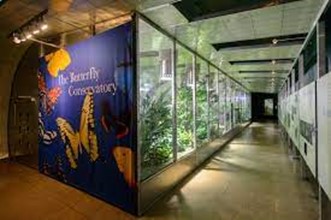
Art
- Paint pottery at Plaster Palace Pottery.
- 2005 Palmer Ave, Larchmont, NY 10538
- (914) 670-8181
- Paint and dine at Muse Paint Bar.
- 84 Mamaroneck Ave, White Plains, NY 10601
- (888) 607-6873

- Learn how to paint at The Art Studio NY.
- 145 W 96th St, New York, NY 10025
- (212) 932-8484
- Enjoy art and music with a Date Night at the MET.
- 1000 5th Ave, New York, NY 10028
- (212) 535-7710
- Experience art, science, and technology at the Artechouse.
- 439 W 15th St, New York, NY 10011

Entertainment
- Listen to live jazz music at:
- Smoke Jazz & Supper Club.
- 2751 Broadway, New York, NY 10025
- (212) 864-6662
- Smoke Jazz & Supper Club.
- Birdland Jazz Club.
- 315 W 44th St #5402, New York, NY 10036
- (212) 581-3080
- Blue Note.
- 131 W 3rd St, New York, NY 10012
- (212) 475-8592
- Watch a movie at Bryant Park.
- New York, NY 10018
- (212) 768-4242

- See what’s playing at Skyline Drive In NYC.
- 1 Oak St, Brooklyn, NY 11222
- (347) 462-0353
Activities
- Skate with Flipper’s Roller Boogie Palace at Rockefeller Center.
- 600 5th Ave, New York, NY 10020
- (212) 771-7200

- Learn how to cook during Sur la Table’s Date Night.
- 306 W 57th St, New York, NY 10019
- (212) 574-8334
- Do yoga with puppies at Woof Wellness Puppy Yoga.
- 431 5th Ave, 6th Floor New York, NY 10016

- Climb at The Cliffs at Valhalla.
- 1 Commerce St, Valhalla, NY 10595
- (914) 328-7625
- Play board games and dine at The Uncommons.
- 230 Thompson St, New York, NY 10012
- (646) 543-9215

- Go thrifting at:
- L Train Vintage.
- 204 1st, New York, NY 10009
- Buffalo Exchange.
- 114 W 26th St, New York, NY 10001
- (212) 675-3535
- AuH2O.
- 84 E 7th St, New York, NY 10003
- (917) 261-7474
- East Village Thrift Shop.
- 186 2nd Ave, New York, NY 10003
- (646) 590-2021
- L Train Vintage.
Democrats Stand Behind Democracy and Local Leaders at Annual Event
- Details
- Written by Joanne Wallenstein
- Category: The Goods
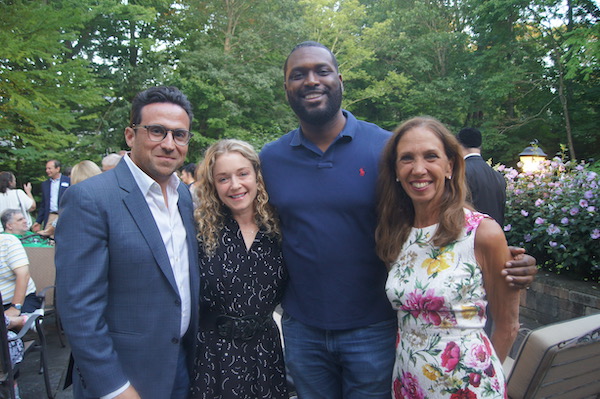
The timing was perfect to acknowledge local leaders, support the party and recognize the importance of defending democracy. All of the speakers remarked on the critical role of both leaders and citizens in preserving free speech and the rule of law.
The event was hosted by the Scarsdale Democrats and Paulin who offered up her home and fresh made pizzas from an outdoor pizza oven.
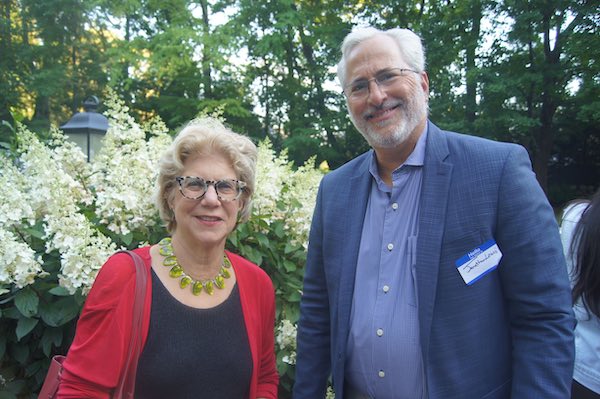 State Senator Shelly Mayer and former Village Trustee Jonathan Lewis
State Senator Shelly Mayer and former Village Trustee Jonathan Lewis
Myra Saul, who heads up the Scarsdale Democrats introduced the attendees that included state, county and local officials along with candidates for justice. She thanked the event committee, BK Munguia, Susan Kessler Ross, Laura Daniels, Tim Foley, Carlos Ramirez, Michelle Lichtenberg, Nan Berke, Sarah Kagan, Jeannie Rosenthal and Elaine Weir Sherman for organizing the evening.
About Trump, State Senator Shelly Mayer said, “The fact that he was indicted is a tribute to our democracy …. We can fight, we can disagree and we’re luck to live in a country where we can do this. The stakes are so high that we must unite to defend our democracy.”
The keynote speaker was former Congressman Mondaire Jones who lost his seat due to re-districting and is running for Congressional District 17, a seat held by Republican Mike Lawler. Also on hand was County Executive George Latimer who is said to be considering a run to unseat Jamaal Bowman for Congressional District 16 which includes Scarsdale.
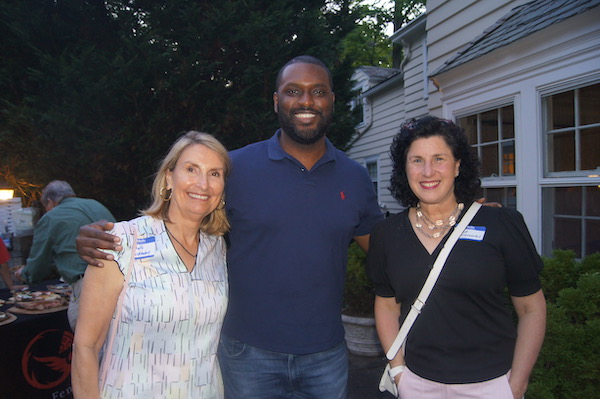
Jones said, “We are facing a crisis unlike anything we have experienced as a nation,” and called upon “the committed group of public servants” to make good choices. In Congress he was voted the most legislatively active Congressman and noted that while in office Congress “rescued the economy from collapse, “passed the biggest infrastructure bill in history,” and brought money for schools and housing at a time people were struggling. He vowed to defend a woman’s right to choose, and to defend educational freedom to teach the truth about slavery and the holocaust.

Among the group was Scarsdale Mayor Justin Arest and former mayors Marc Samwick, Jon Mark and Carolyn Stevens. Current and former Village trustees Dara Gruenberg, Jonathan Lewis and Seth Ross, County Legislator Ben Boykin and candidate for County Legislator Ruth Walter along with several judges and aspirants for State Supreme Court.


Can AI Transform Education in America?
- Details
- Written by Sameer Ahuja
- Category: The Goods
 (Written by Scarsdale Village Trustee Sameer Ahuja)
(Written by Scarsdale Village Trustee Sameer Ahuja)
Party Guest: What are you going to do now?
Benjamin Braddock: I was going to go upstairs for a minute.
Party Guest: I mean with your future…?
Film fans, especially of the Baby Boomer variety, will likely recognize this dialogue from Mike Nichols’ classic The Graduate (1967). During what should be a happy graduation party, our hero Benjamin Braddock (Dustin Hoffman) instead finds himself lost. Confused. Especially as he’s on the receiving end of so many questions surrounding what’s to become of him.
This scene perfectly illustrates the fraught transition from college to the “real world.” Braddock epitomizes the fear and uncertainty surrounding what to do with one’s hard-earned degree.
It seems that no matter who you are, if you’re a young person, you can’t escape this burning question: “So what are you doing with your life?”
Nearly 60 years have passed since the release of this cultural touchstone. Today’s grads may look quite different—suits and ties are out, sneakers are in at family gatherings—but their existential angst hasn’t gone away.
In fact, for today’s young adults, the above question is becoming increasingly harder to answer. Even before ChatGPT threatened to zap so many “safe” white collar jobs, many a grad struggled with how to apply their degree to stable career paths.
In a recent study by ZipRecruiter, some top majors most lamented by students include: journalism, sociology, and education. And while these studies originate from different academic fields, they all have one thing in common: Lack of job prospects.
It’s not the fact that these fields aren’t useful. If anything, with increasing disruption to our information delivery systems and educational institutions, we need more trained experts in these areas. It’s the current ROI on these degrees.
What is the ROI on College Education?
Endless columns have been inked about the discrepancies in quality and accessibility of pre-college education across the U.S. This topic continues to spark heated debate across the country, but less contentious is the enduring reputation of America's higher education system. Among the vibrant tableau of global higher education, U.S. colleges and universities command a bright corner, frequently crowning the upper tiers of global rankings.
These institutions, renowned for groundbreaking research, unparalleled faculty, cutting-edge facilities, and a kaleidoscopic array of courses that inspire intellectual curiosity, serve as more than just a springboard for academic excellence.
Yet, it's the nebulous relationship between the ever-escalating costs of this education and the prospective career outcomes in an accelerating 21st-century world that raises eyebrows and concern alike.
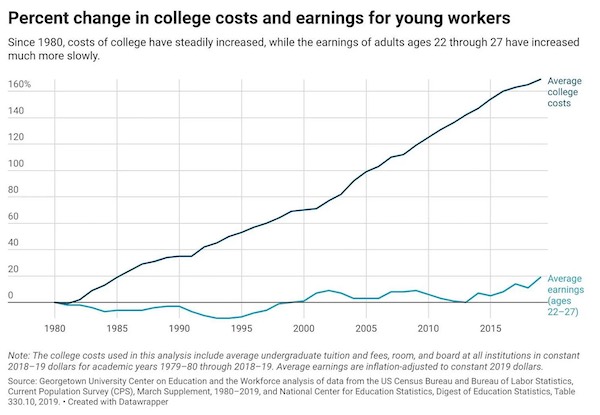
For starters, soaring costs are leading many to question the value of the four-year degree. Our traditional cause-and-effect relationship between a degree and higher earning power is crumbling before our very eyes. And for those who choose to attend, student loans are preventing them from fully participating in our economy.
It’s therefore no surprise that American youth are increasingly considering eschewing the college path, opting instead for more practical, job-specific education. Especially men. As this Breaking Points segment reveals, males are fleeing universities. By the millions.
Meanwhile, alternatives like trade schools are exploding in popularity. Real-life experiences and skill-specific training are also gaining prominence, offering yet another path to success. This comes at a time when we could use all the mechanics and engineers we can get—the subject of a recent CAO article.
But this is not just some blue-collar revolution.
Today’s knowledge workers are also questioning college’s value. Especially since marquee employers like IBM, Accenture, and Bank of America have all dropped requirements for four-year degrees, citing labor shortages and their ability to train entry-level personnel on the job.
Simultaneously, companies like Google are investing millions in targeted employee education and online certification programs. These offerings are also more affordable and require less commitment than four years at school—often the monetary equivalent of taking out a home mortgage.
All this points to one inescapable truth: In our quickly evolving economic landscape, a plurality of options exist to answer our initial query: “So what are you doing with your life?”
How Has Tech Impacted Education?
There has been an explosion of tech in education. Virtual classes and remote learning are here to stay, enabling a more personalized curriculum. Cutting edge VR also offers immersive learning experiences that were the stuff of The Jetsons’ back in the ‘60s.
Digital learning platforms have gained incredible traction. In a rapidly changing world, online platforms are not only serving the education needs of young students but also offering a multitude of opportunities for adults seeking continuous learning. For example, Khan Academy, has attracted over 130 million learners. Digital learning platforms like Coursera and Udemy provide a plethora of courses, from marketing to coding, that enable professionals to keep their skills up-to-date or pivot their careers entirely. These platforms offer a self-paced, customized learning experience, enabling students to grasp concepts at their own speed. The shift toward lifelong learning is being recognized as a necessity, given the pace of technological change and job market volatility.
Advancements in tech and skills-based learning models challenge the traditional notion of a college education. But they’re not without their faults. Already, we saw how remote learning failed to live up to many of its promises during the COVID-19 school closures.
The revolution is not limited to the U.S. It's unmistakable how technology has revolutionized education in China. Classrooms have been transformed with the advent of digital learning, with platforms like VIPKid and TAL Education stepping up to the plate. These platforms have been game-changers, providing top-tier educational resources even to students tucked away in the most remote corners of the country. But the real driving force behind this shift was the Chinese government's "Internet Plus" strategy, a catalyst that set the edtech scene ablaze with startups and investments. Fast-forward to today, AI-powered platforms like Squirrel AI are redefining what personalized learning means - adapting and evolving with every student. And as if this isn't exciting enough, China's 2020 New Infrastructure Initiative is pouring resources into 5G technology and AI. This sets the stage for next-gen learning experiences, where virtual and augmented reality step out of the realms of science fiction and into the classroom.
What About AI and Education in the US?
In the ever-evolving landscape of American education, AI emerges as a beacon of hope, potentially reshaping the terrain and fostering equitable opportunities. Here's why it's a cause for optimism, especially for those who've been kept at the periphery of quality education, courtesy of age-old systemic hurdles.
First off, let's acknowledge the elephant in the room - the daunting disparities in U.S. education tied to geography and economic status. Undoubtedly, low-income areas and their schools often get the short end of the stick - limited resources, teeming classrooms, and a dearth of well-trained educators. But here's where AI flexes its muscles. Imagine AI-powered e-learning platforms, dishing out tailor-made, top-notch educational content to every student, without any regard for their location or their school's fiscal health. Sounds like a revolution, doesn't it? Will we really have AI-powered instructors? Actually, Harvard is already rolling them out.
Consider AI tutors, not constrained by classroom capacity or teacher-student ratios, but focused solely on individual instruction. Every student gets personalized attention, with AI seamlessly adapting to each learner's unique style, strengths, and areas of improvement. Suddenly, the daunting challenge of large student-to-teacher ratios in underfunded schools looks less intimidating. Marc Andreessen, co-founder of A16Z says:
“Every child will have an AI tutor that is infinitely patient, infinitely compassionate, infinitely knowledgeable, infinitely helpful. The AI tutor will be by each child’s side every step of their development, helping them maximize their potential with the machine version of infinite love.”
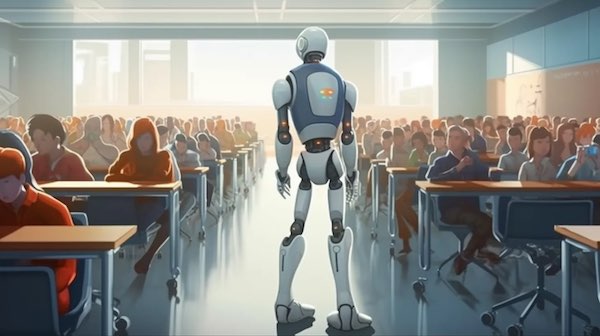 AI's potential isn't confined to personalization. It's also a gateway to an almost infinite expanse of resources. Think of a student diving into an ocean of knowledge, where AI-driven educational platforms offer everything from intricate math puzzles to intriguing historical narratives. It's like having an expansive, limitless library, always at their disposal.
AI's potential isn't confined to personalization. It's also a gateway to an almost infinite expanse of resources. Think of a student diving into an ocean of knowledge, where AI-driven educational platforms offer everything from intricate math puzzles to intriguing historical narratives. It's like having an expansive, limitless library, always at their disposal.
For students grappling with English as a second language, AI dons the hat of a patient and effective language coach. AI-powered apps can offer instant translations and language lessons, empowering students to fully engage in classroom discussions and absorb curriculum content seamlessly. What if you could read and comprehend three books per day with an AI-assisted reader, helping you fly through chapters in a fraction of the time?
Another ace up AI's sleeve is its ability to detect learning difficulties early. By constantly evaluating a student's performance and detecting anomalies, AI can signal potential problems before they snowball into unmanageable hurdles. This proactive approach can be a lifeline for students who risk being lost in crowded classrooms where personalized attention is a rare commodity.
Of course, the path to harnessing AI's full potential isn't without its obstacles, with the digital divide being a prominent one. To make AI a universal educational tool, we need to bridge this gap. That's where collaborations between tech giants, governmental entities, and education institutions can play a significant role, ensuring even the underprivileged have the necessary tech infrastructure and internet access. The goal? A digital device and reliable internet service for every child, irrespective of their economic background.
Yes, there's much ground to cover before AI can fully realize its potential in education, but the journey seems promising. With careful planning and execution, AI could emerge as a crucial ally in the pursuit of equal educational opportunity for all U.S. students.
No matter what happens next, AI heralds an exciting era where we may shed the one-size-fits-all educational model, allowing students a more self-determined path focused on personalized goals.
What Does This Mean for Traditional Education?
Just like our preference-based entertainment algorithms, AI-driven systems can adapt to individual learning styles, providing tailored instruction, enhancing educational outcomes. This begs a different question: While the full impact of AI in education is yet to be realized, might it democratize the whole endeavor, producing a nation of autodidacts—or self-taught individuals?
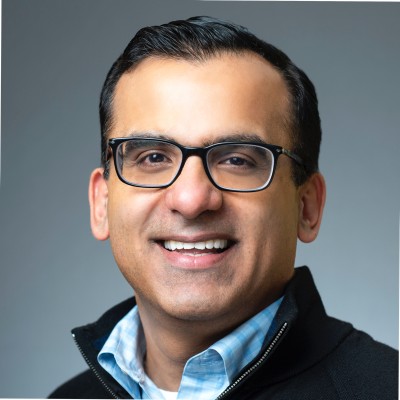 Sameer AhujaA transition to a more decentralized model of education comes with its own challenges. Ensuring quality and consistency in a system where everyone is following their own educational path can be difficult. The role of the teacher is also evolving, from a primary source of knowledge to a facilitator guiding students on their personalized learning journeys.
Sameer AhujaA transition to a more decentralized model of education comes with its own challenges. Ensuring quality and consistency in a system where everyone is following their own educational path can be difficult. The role of the teacher is also evolving, from a primary source of knowledge to a facilitator guiding students on their personalized learning journeys.
Furthermore, the shift towards more job-specific education raises questions about social mobility. As students start specializing early, they could find themselves tied to specific industries or career paths, which might restrict their ability to shift gears in an unpredictable economy. The flexibility that comes with a broader, liberal arts education may be missing in this new paradigm.
As we navigate this era of profound change, one thing is for certain—more uncertainty. And while it’s normal for young adults to feel the many doubts evidenced by Benjamin Braddock, it's also vital we ensure learners are equipped with skills to thrive, not just survive, in our fascinating new world.













